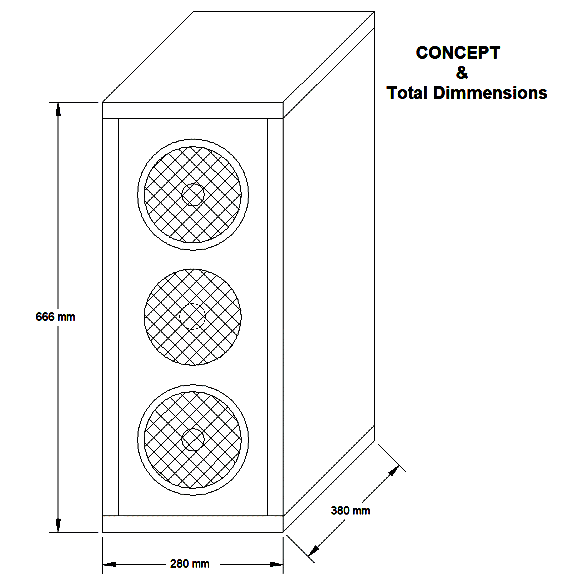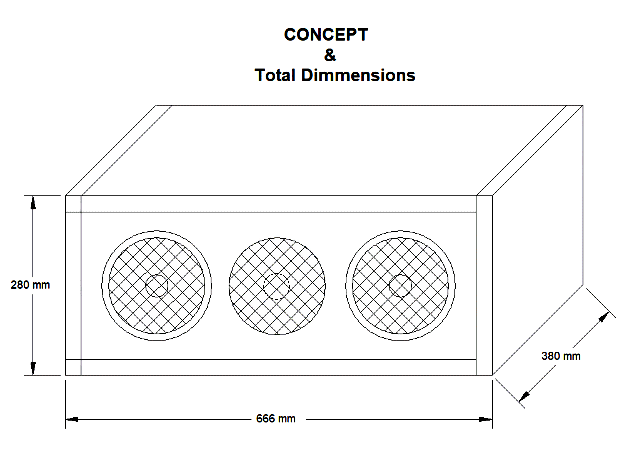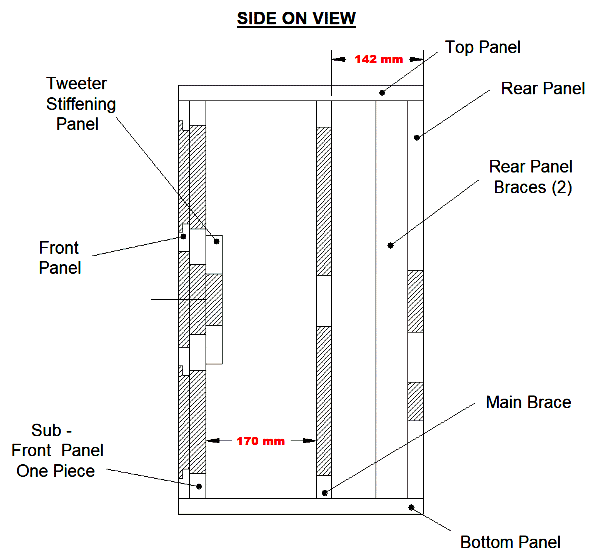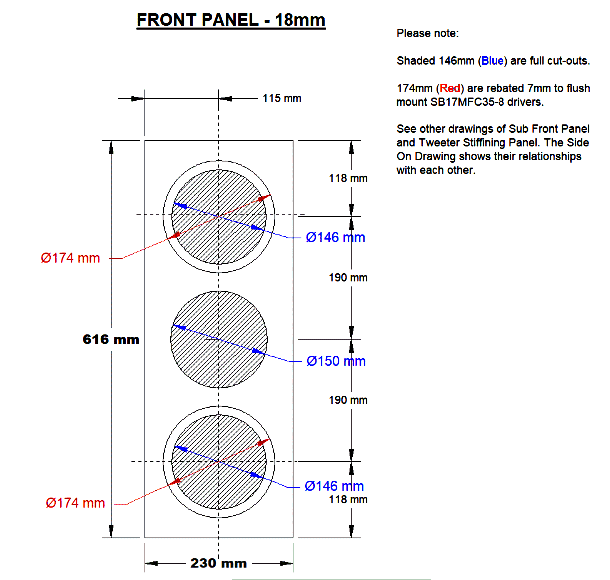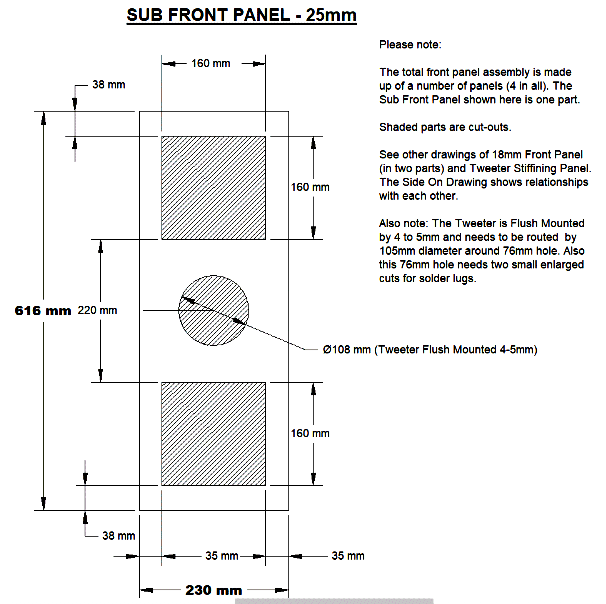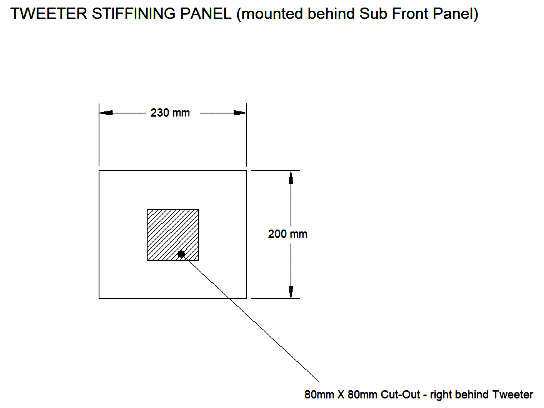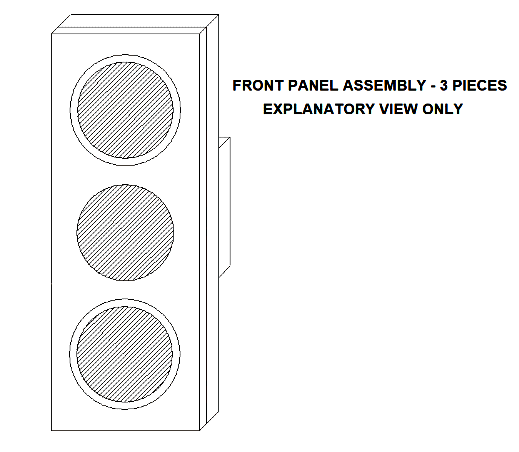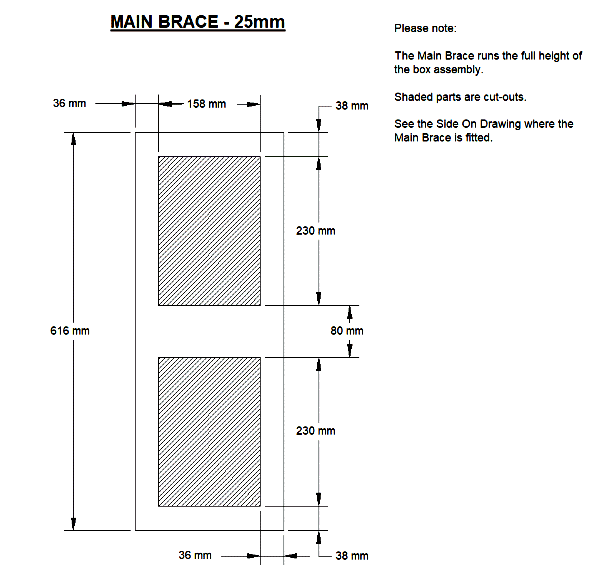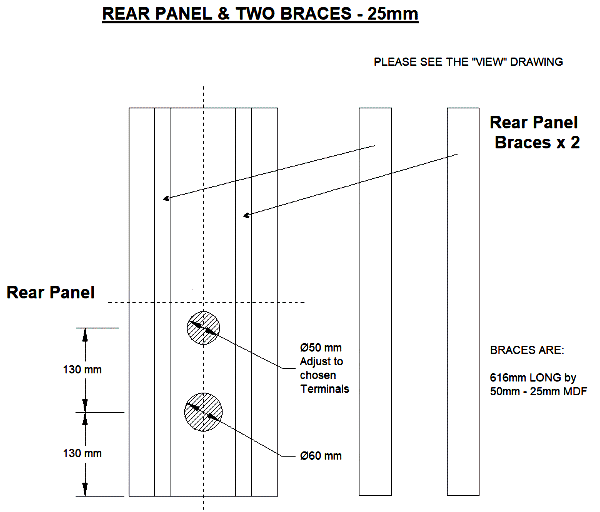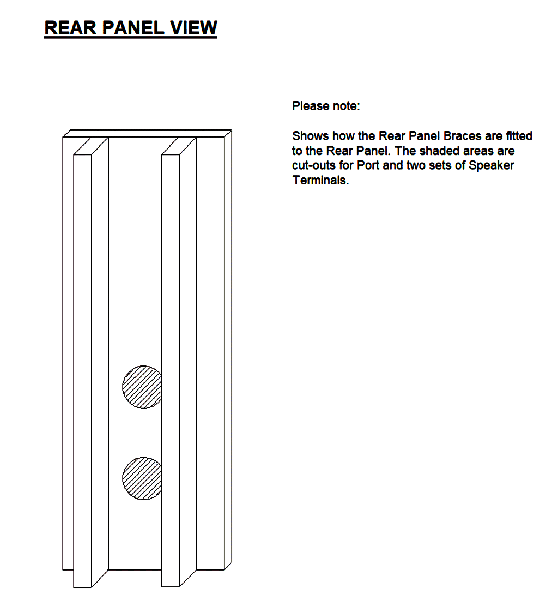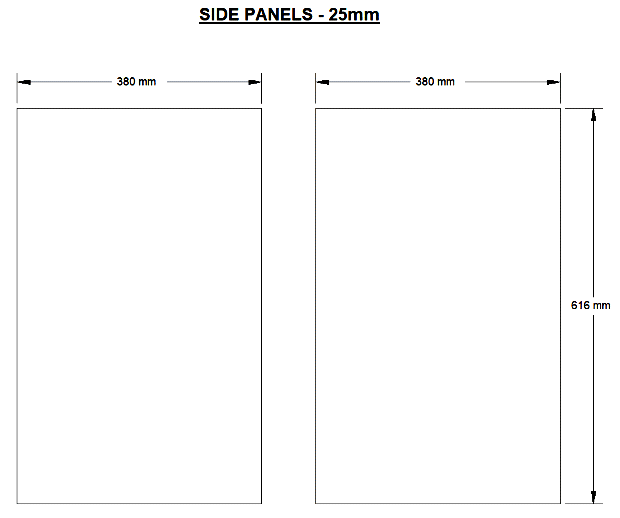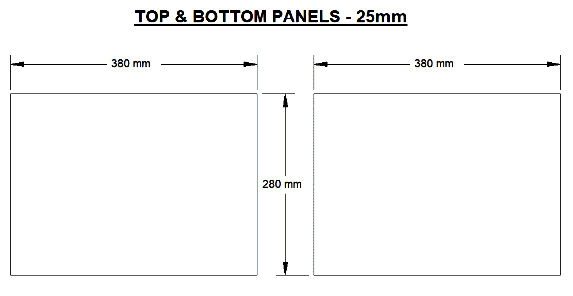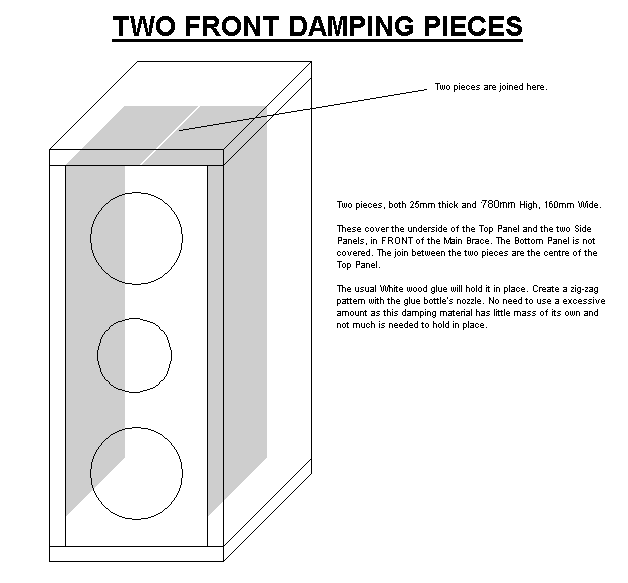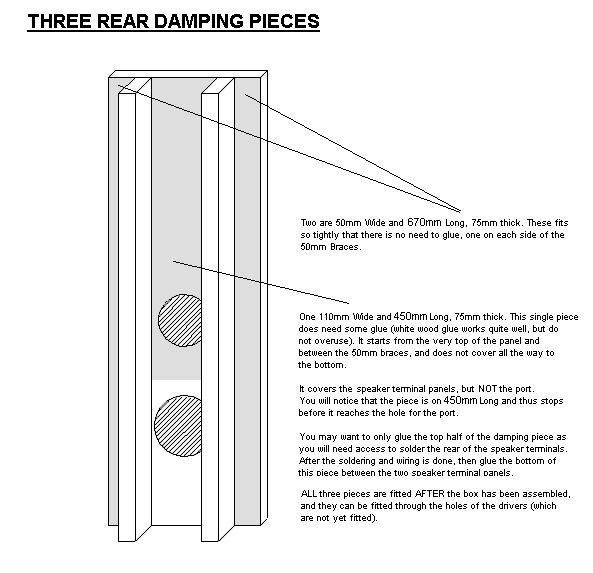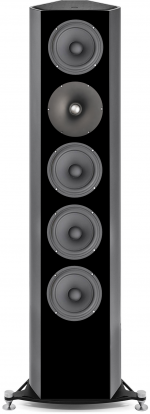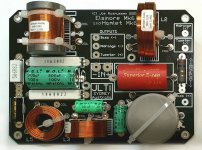I agree, I was watching the thread as Joe was posting all of this. All the details looks great as far as I can tell. The only thing that I didn't understand is if there are 3 or 4 parts to the front panel.
Glad that is done, posted it last night before going to bed. The good thing is that the images are on my web's server, so I can still edit them if somebody spots anything that needs to be corrected or improved.
The older Hamlet Mk-3 the front panel assembly was four pieces, now with the round Waveguide, it is three pieces.
.
The older Hamlet Mk-3 the front panel assembly was four pieces, now with the round Waveguide, it is three pieces.
.
Ah, that is what I was thinking but I didn't know if I still missed something. Fantastic job!
There is a pair of Lipinski 707’s for sale at Audiogon for $4300
Stereophile: Lipinski Sound L-707 loudspeaker | Stereophile.com
Audiogon: Lipinski Sound Corp. L-707 | Monitors | Freestone, California 95472 | Audiogon
Stereophile: Lipinski Sound L-707 loudspeaker | Stereophile.com
Audiogon: Lipinski Sound Corp. L-707 | Monitors | Freestone, California 95472 | Audiogon
From the Stereophile article:
In the time domain, the L-707's step response (fig.7) surprised me by indicating that the tweeter is connected in inverted acoustic polarity to the woofers. Despite the setback of the tweeter subbaffle and the low-order crossover filters, the speaker is not time-coincident. This was confirmed by looking at the step responses of the individual drive-units (fig.8). But what is important to note from this graph is that the overhang of the tweeter's inverted step (red trace) blends smoothly into the woofer's step (blue). This time coincidence correlates nicely with the excellent frequency-domain integration seen in fig.4.
In the time domain, the L-707's step response (fig.7) surprised me by indicating that the tweeter is connected in inverted acoustic polarity to the woofers. Despite the setback of the tweeter subbaffle and the low-order crossover filters, the speaker is not time-coincident. This was confirmed by looking at the step responses of the individual drive-units (fig.8). But what is important to note from this graph is that the overhang of the tweeter's inverted step (red trace) blends smoothly into the woofer's step (blue). This time coincidence correlates nicely with the excellent frequency-domain integration seen in fig.4.
Last edited:
Stereophile Review:
"While the Lipinski L-707s displayed excellent imaging, extended dynamic range, and translucent mids and highs, their strongest characteristic was their wide, deep soundstage, with an unusual level of spatial resolution for individual orchestral instruments and choral voices"... Midrange timbres were especially rich.
I have never actually heard them, but I know enough about the speaker to not be surprised that it has that special "unusual level of spatial resolution" and "midrange richness." The Hamlet has similarities technically, like the way it sorts out the impulse responses of the drivers in time and being 1st order, but does more to keep the current of the amplifier far more friendly, for which I have reason to believe to be important to the sound.
I am also certain that the Hamlet's tweeter distortion is even lower by a large margin. I know the tweeter that the L-707 uses and I also understand that he gets a nice waveguide effect that gives it a good chance to shine. But it is not on the same level as the tweeter we are using with a more precise waveguide effect that takes that tweeter to a higher level. Note the L3 and C2, these are distortion killers in that they almost make the tweeter stationary at their circa 700Hz resonance. Dome tweeters don't like to move and this keeps them close to stationary!
What I am trying to say, while Hamlets are similar to the L-707, I do believe that as far as DIY is concerned, this is a more up-to-date design and I honestly believe it to be even better. I don't want to sound big-headed, but I am saying this opinion is based on technical design features that goes even further. And it won't cost $4300 to build.
When a speaker constructs both a deep soundstage and a large soundfield, then the music has a chance to shine. 🙂
PS: I have a friend in Auckland, Brian Gurr, who has a pair of Elsinores that he built. Brian is unusual in that he rebuilds electrostatic speakers with 1/3rd of the thickness of mylar (and 1/3rd the mass), for example to Martin-Logan electrostatics. No manufacturers would do this because you can't ship them anywhere, wat too fragile. Now Brian tells me that the treble that comes from our waveguide tweeter matches the treble he gets from his electrostatics. So maybe I won't get anybody asking why I don't use a better tweeter - they mean more expensive tweeter? I am in no hurry to do that, if ever!
"While the Lipinski L-707s displayed excellent imaging, extended dynamic range, and translucent mids and highs, their strongest characteristic was their wide, deep soundstage, with an unusual level of spatial resolution for individual orchestral instruments and choral voices"... Midrange timbres were especially rich.
I have never actually heard them, but I know enough about the speaker to not be surprised that it has that special "unusual level of spatial resolution" and "midrange richness." The Hamlet has similarities technically, like the way it sorts out the impulse responses of the drivers in time and being 1st order, but does more to keep the current of the amplifier far more friendly, for which I have reason to believe to be important to the sound.
I am also certain that the Hamlet's tweeter distortion is even lower by a large margin. I know the tweeter that the L-707 uses and I also understand that he gets a nice waveguide effect that gives it a good chance to shine. But it is not on the same level as the tweeter we are using with a more precise waveguide effect that takes that tweeter to a higher level. Note the L3 and C2, these are distortion killers in that they almost make the tweeter stationary at their circa 700Hz resonance. Dome tweeters don't like to move and this keeps them close to stationary!
What I am trying to say, while Hamlets are similar to the L-707, I do believe that as far as DIY is concerned, this is a more up-to-date design and I honestly believe it to be even better. I don't want to sound big-headed, but I am saying this opinion is based on technical design features that goes even further. And it won't cost $4300 to build.
When a speaker constructs both a deep soundstage and a large soundfield, then the music has a chance to shine. 🙂
PS: I have a friend in Auckland, Brian Gurr, who has a pair of Elsinores that he built. Brian is unusual in that he rebuilds electrostatic speakers with 1/3rd of the thickness of mylar (and 1/3rd the mass), for example to Martin-Logan electrostatics. No manufacturers would do this because you can't ship them anywhere, wat too fragile. Now Brian tells me that the treble that comes from our waveguide tweeter matches the treble he gets from his electrostatics. So maybe I won't get anybody asking why I don't use a better tweeter - they mean more expensive tweeter? I am in no hurry to do that, if ever!
Last edited:
Joe, to be honestly this Elsinore is killing me for not building it. more and more money i spent on other project but the only reason i haven't build Elsinore yet is due to I have to import the tweeter and WG
due to this covid, i have been WFH since last year, usually my overseas package come to my office from EMS service, but now i rarely go to office. last year i tried to buy cheap package $8 to be sent to my home and then EMS guy send it to someone else and my package status was delivered...really bad, contacting customer service is useless
i will be a gambling if i order tweeter WG using EMS and sent to someone else again 🙂 maybe this covid will be gone soon and everything becomes normal and I'm back to my office
meanwhile I just render my build for stacked green mdf
due to this covid, i have been WFH since last year, usually my overseas package come to my office from EMS service, but now i rarely go to office. last year i tried to buy cheap package $8 to be sent to my home and then EMS guy send it to someone else and my package status was delivered...really bad, contacting customer service is useless
i will be a gambling if i order tweeter WG using EMS and sent to someone else again 🙂 maybe this covid will be gone soon and everything becomes normal and I'm back to my office
meanwhile I just render my build for stacked green mdf
Attachments
This PCB, here EL-6 MFC components populated, is designed to go through 146mm driver aperture/hole and mounted in the bottom of the box.
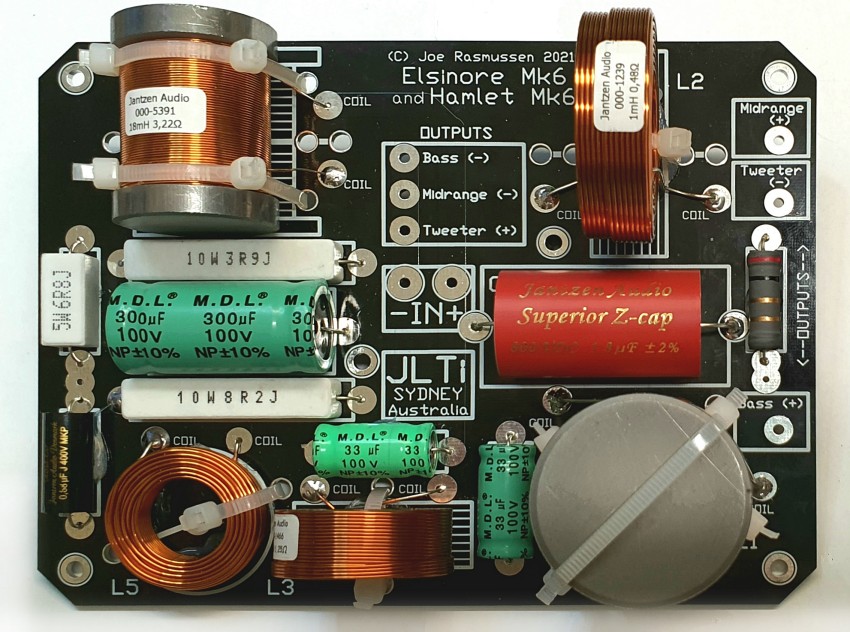
PS: Just a thought, the critical parts are nearly all Jantzen components and stick to that selection and the components should fit on the board and also get inside the box.
I have reviewed the construction drawings when using internal crossovers and that will soon be posted on my website. So getting both Elsinore Mk6 and Hamlet Mk6 up-to-date is near finishing.
PCB Waveguide and PCB costing to come soon. So we are almost there.
PS: Just a thought, the critical parts are nearly all Jantzen components and stick to that selection and the components should fit on the board and also get inside the box.
I have reviewed the construction drawings when using internal crossovers and that will soon be posted on my website. So getting both Elsinore Mk6 and Hamlet Mk6 up-to-date is near finishing.
PCB Waveguide and PCB costing to come soon. So we are almost there.
Attachments
Last edited:
The problem is the large overlap between the two, they use the same Crossover PCB and Waveguides and many dimensions are the same etc. Also, the Hamlet can be used as centre-channel with Elsinore Left and Right, and so on... things that applies to one applies to the other.
.
.
Yes. But I think it will come with 18mH inductor as it fits on the PCB exactly as shown and I have a ready supply.
- Home
- Loudspeakers
- Multi-Way
- The "Elsinore Project" Thread
